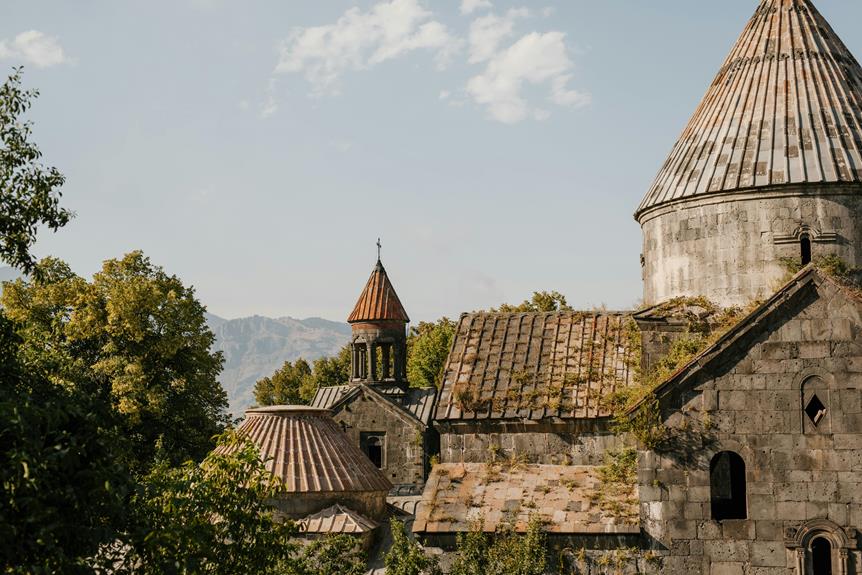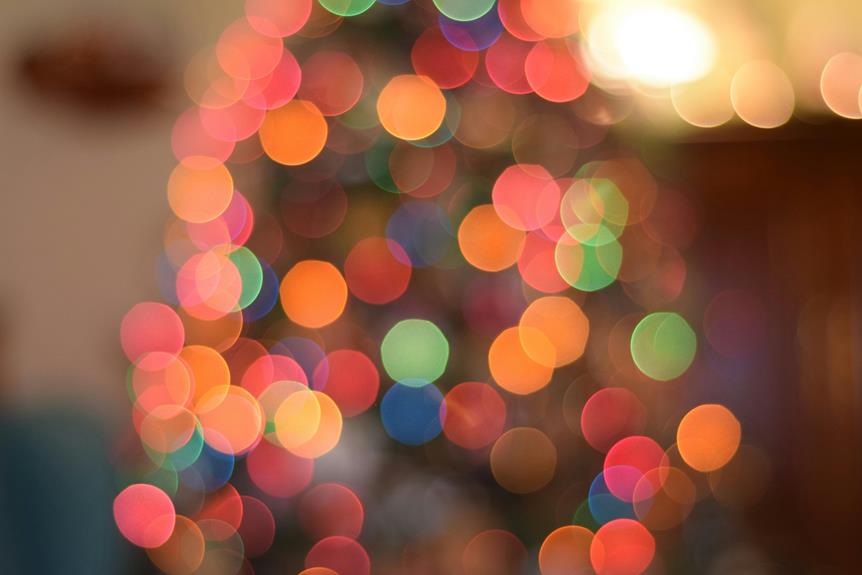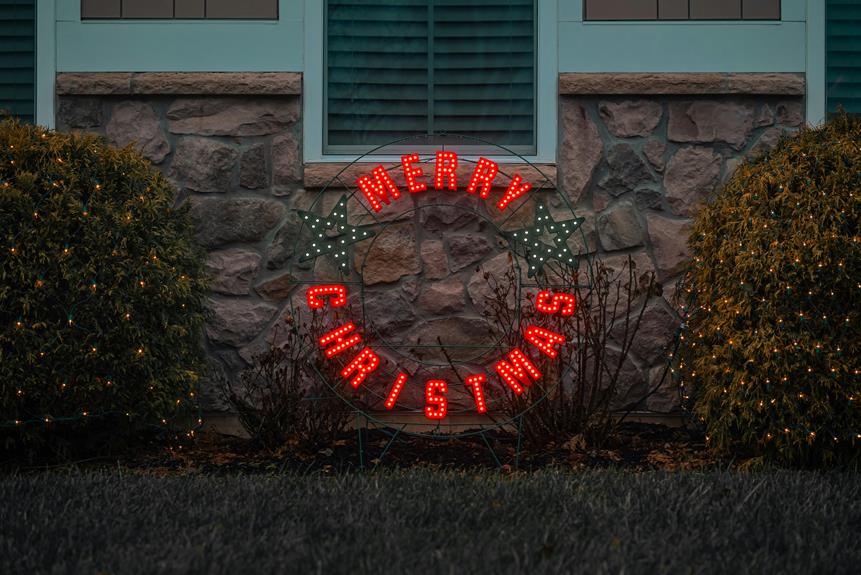As you deck the halls with festive decorations, you're participating in a rich history that spans thousands of years, from ancient pagan rituals to modern-day symbols of joy and celebration. You're tracing the footsteps of Celtic Druids, Germanic tribes, and Victorian royals who all contributed to the evolution of the Christmas tree. From candlelit evergreens to electrically illuminated masterpieces, the tree's meaning has transformed over time, absorbing cultural influences and symbolic meanings. Now, as you gaze upon your own tree, you're part of a global celebration that bridges traditions, cultures, and time – and there's still so much more to unwrap.
Key Takeaways
- The ancient origins of tree worship date back to pagan cultures, who brought evergreens into their homes during harsh winter months to symbolize life and hope.
- Germanic tribes celebrated the Winter Solstice by burning a Yule Log, symbolizing the return of light and warmth to the land.
- Early Christians adapted pagan rituals, associating the evergreen tree with eternal life and Christ's resurrection, and linking its triangular shape to the Holy Trinity.
- The Victorian era saw a revival of the Christmas tree tradition, popularized by Prince Albert and Queen Victoria, featuring ornate decorations and royal influence.
- The introduction of electric lights in the 1880s revolutionized Christmas tree decorations, making them safer and more dazzling, and catapulting the tradition to unprecedented popularity.
Ancient Origins of Tree Worship
As you explore the history of the Christmas tree, you'll discover that the ancient origins of tree worship stretch back to a time when pagans brought evergreens into their homes during the harsh winter months, symbolizing life and hope amidst the cold, dark days.
The Celtic Druids, a group of pagan priests, played a significant role in this ancient tradition. They believed that trees held mystical powers and that the evergreen trees, in particular, were sacred.
These trees remained green throughout the winter, defying the harsh conditions, and were seen as a symbol of eternal life. The Druids would often gather in Sacred Groves, performing rituals and ceremonies to honor the trees and the gods they represented.
In these groves, the Druids would decorate the trees with candles, fruits, and other ornaments, creating a festive atmosphere. This ancient practice wasn't only a celebration of life but also a way to connect with nature and the divine.
As you examine more closely into the history of the Christmas tree, you'll find that these ancient traditions laid the foundation for the modern-day celebrations that are familiar to us today.
Germanic Tribes and Yule Logs
Venturing into the heart of ancient Germania, you'll find that Germanic tribes, like the Saxons and Vikings, played a significant role in shaping the modern Christmas tree tradition. During the harsh winter months, these tribes would celebrate the Winter Solstice, a time of great importance as it marked the longest night of the year and the beginning of the sun's journey back towards the equator.
Their tribal rituals, centered around the Yule Log, were an integral part of this celebration.
Yule Log Selection: A large, sturdy log was chosen, often from a sacred tree, to be burned throughout the Twelve Days of Christmas.
Fire Ceremony: The log was lit on the eve of the Winter Solstice, symbolizing the return of light and warmth to the land.
Feasting and Merriment: The tribes would gather 'round the fire, feasting, singing, and making merry to drive away the darkness.
Divination and Rituals: The ashes from the Yule Log were believed to hold mystical powers, used for divination and protection against evil spirits.
These ancient traditions, though rooted in pagan practices, have had a lasting impact on the modern Christmas tree tradition, as we'll explore further in the next chapter.
Early Christian Adaptations
Early Christian adaptations of the Yule Log rituals transformed the pagan practices into a symbol of Christian faith, with the evergreen tree emerging as a powerful new symbol.
As Christianity spread throughout Europe, early saints like St. Boniface and St. Martin of Tours saw an opportunity to convert pagan rituals into Christian symbolism. They cleverly incorporated the evergreen tree into their teachings, associating its eternal greenery with eternal life and Christ's resurrection.
The early Christian church also linked the tree's triangular shape to the Holy Trinity – Father, Son, and Holy Spirit. This strategic move helped to supplant pagan traditions with Christian meaning, making the evergreen tree an enduring symbol of faith.
You'll notice that Christian symbolism began to dominate the narrative, as the tree's significance shifted from a pagan winter solstice celebration to a representation of Christian values. This pivotal transformation laid the groundwork for the Christmas tree's evolution into the beloved tradition we celebrate today.
Victorian Era Revival
During the Victorian era, the Christmas tree tradition experienced a remarkable revival, largely thanks to the influence of Prince Albert, Queen Victoria's German-born husband.
As you explore this period, you'll discover that the royal couple's enthusiasm for Christmas trees helped popularize the practice throughout Britain. The Illustrated London News featured an illustration of the royal family around a decorated tree, further fueling the trend.
Victorian-era Christmas trees were renowned for their Ornate Decorations, which often included:
Candles: symbolizing the starry night sky and adding a touch of magic to the tree
Glass ornaments: imported from Germany, these delicate decorations added a pop of color and sophistication
Fruits and sweets: edible treats like apples, nuts, and candies were hung from the branches
Ribbons and garlands: intricately woven fabrics and flowers added a touch of elegance to the tree
The Royal Influence of Prince Albert and Queen Victoria played a significant role in shaping the modern Christmas tree tradition.
As you examine more closely, you'll find that their love for Christmas trees helped spread the practice across the globe, making it an integral part of the holiday season.
German Immigration to America
As German immigrants arrived in America, they brought with them their cherished Christmas traditions, including the beloved tree, which would soon take root in their new homeland.
You can imagine the excitement and nostalgia these immigrants felt as they stepped off the ship at Ellis Island, carrying with them the memories of their German heritage. As they settled into their new lives, they sought to recreate the festive atmosphere they once knew.
They brought with them their Christmas trees, decorated with candles, fruits, and nuts, which quickly became a symbol of their cultural identity.
However, as these immigrants began to assimilate into American culture, their traditions underwent a transformation.
You notice that the Christmas tree, once a distinctly German custom, started to blend in with American practices. The trees became taller, more extravagant, and ornate, reflecting the American love for grandeur and spectacle.
Despite this cultural assimilation, the essence of the Christmas tree remained, a reflection of the enduring spirit of German immigrants who brought a piece of their homeland to America.
As you explore the history of the Christmas tree, you'll discover how this fusion of cultures gave birth to a uniquely American tradition.
Electric Lights and Popularity
The introduction of electric lights in the 1880s revolutionized Christmas tree decorations, making them safer and more dazzling, and catapulting the Christmas tree to unprecedented popularity in American homes.
You might be surprised to learn that Thomas Edison's assistant, Edward Johnson, created the first electric Christmas lights in 1882. These early lights were a novelty, but they quickly gained traction as they became more accessible and affordable.
As electric lights became more widespread, you started to see them everywhere – from homes to department stores. The lights added a new level of magic to the holiday season, and people would often host Light Shows in their neighborhoods, drawing in crowds from around the block.
Having a Christmas tree with electric lights became a status symbol, showcasing one's social status and ability to afford the latest technology.
Electric lights made Christmas trees safer by reducing the risk of fires from candles.
They added a new level of visual appeal, making trees more dazzling and attention-grabbing.
Electric lights made it possible for people to decorate their trees in new and creative ways.
They helped to solidify the Christmas tree as a central part of American holiday traditions.
Post-War Commercialization Boom
Following World War II, you witnessed a massive commercialization boom that transformed the Christmas tree industry, turning it into a multibillion-dollar market.
As the economy grew, companies capitalized on the festive season, investing heavily in mass marketing and innovative advertising strategies. You saw Christmas tree farms popping up across the country, catering to the increasing demand for fresh trees.
Artificial trees also gained popularity, offering a convenient and reusable alternative.
In the 1950s and 60s, you saw the rise of big-box retailers, which further fueled the commercialization of Christmas trees.
These stores offered a one-stop-shop experience, where you could buy everything from trees to decorations under one roof.
Marketing campaigns became more sophisticated, targeting specific demographics and creating a sense of urgency around Christmas shopping. You were bombarded with advertisements on TV, radio, and print media, all vying for your attention and wallet.
As a result, the Christmas tree industry experienced rapid growth, becoming an integral part of the holiday season's cultural fabric.
Environmental Concerns Rise
You're now facing a growing concern that Christmas trees, once a symbol of joy and celebration, have become a significant contributor to environmental degradation, from deforestation to waste management issues.
The reality is that the traditional Christmas tree industry is harming the planet.
As you consider the environmental impact of your holiday traditions, you must weigh the pros and cons of real vs. artificial trees.
Sustainable Forestry: Some Christmas tree farms prioritize sustainable forestry practices, ensuring that trees are harvested and replanted responsibly. Look for certifications like the Sustainable Forestry Initiative (SFI) or the Forest Stewardship Council (FSC).
Eco-Friendly Alternatives: Consider opting for an artificial tree made from recycled materials or renting a living tree that can be replanted after the holiday season.
Tree Recycling: If you do choose a real tree, make sure it's recycled or composted after the holidays to reduce waste.
Local Sourcing: Support local farmers and reduce transportation emissions by choosing a tree from a nearby farm.
Modern Tree Traditions Worldwide
Christmas celebrations evolve globally, unique tree traditions have emerged in various countries, reflecting local customs and cultural twists.
You'll find that each nation puts its own spin on the classic Christmas tree. In Japan, you'll discover miniature Tree Topiaries, intricately designed to fit into small urban spaces.
Meanwhile, in India, you'll see trees adorned with vibrant decorations and lights, blending Hindu and Christian traditions in a beautiful display of Cultural Fusion.
In Mexico, the tree is often decorated with piñatas, sombreros, and colorful papel picado, giving it a festive fiesta flair.
In Iceland, you'll find trees decorated with traditional Icelandic sweaters, known as lopapeysur, adding a cozy touch to the winter wonderland.
In Australia, where Christmas falls during the summer season, you might spot trees decorated with seashells, starfish, and other beach-inspired ornaments.
As you explore the world's diverse Christmas tree traditions, you'll be struck by the creativity and individuality that defines each culture's celebration of the holiday season.
Frequently Asked Questions
What Is the Significance of the Christmas Tree's Evergreen Branches?
You see, the evergreen branches of the Christmas tree symbolize eternal life and rebirth, echoing ancient symbolism. During the Winter Solstice, they remind you that even in the darkest times, life persists, and new beginnings are just around the corner.
Can Artificial Trees Be Considered a Sustainable Alternative?
You're wondering if artificial trees can be a guilt-free choice, and the answer is, they can be! Artificial trees reduce the environmental impact of harvesting millions of real trees, making them a surprisingly eco-friendly alternative for your holiday cheer.
How Do Different Cultures Around the World Decorate Their Trees?
You'll discover unique tree traditions as you explore how different cultures around the world decorate their trees, blending cultural fusion with local twists, from Japan's minimalist designs to India's vibrant diyas and Mexico's colorful papier-mâché ornaments.
What Is the Origin of the Star or Angel Tree Topper Tradition?
You're curious about the star or angel tree topper tradition? Well, it's said that Tree Legends inspired the practice, with Celestial Icons symbolizing divine guidance, and you've been carrying on this heavenly habit ever since!
Are There Any Christmas Tree Traditions That Are Exclusive to Certain Countries?
You'll discover unique Christmas tree traditions when traveling abroad! In Germany, you'll find festive markets decorated with trees, while in Sweden, trees are adorned with candles on St. Lucia's Day, December 13th, symbolizing hope and light.
Conclusion
As you gaze upon your twinkling Christmas tree, remember the rich history behind this beloved symbol.
From ancient pagan roots to modern-day commercialization, the tree has evolved substantially.
Did you know that over 25% of real Christmas trees are grown in Oregon, USA, alone?
This fascinating fact highlights the state's prominent role in the industry.
Today, the tree remains a universal symbol of joy, hope, and celebration, connecting us all across cultures and time.


